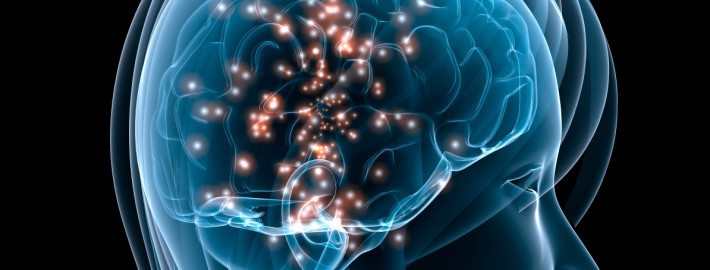Biological Basis of Behavior Explained: What You Should Know about Hormones, Peptides and Amines
Hormones are chemicals produced by our body to regulate three critical functions: maintain a state of balance (homeostasis), control our reproductive organs and mediate our responses to stress. Hormones are produced by endocrine glands located in various parts of the body, namely the brain, the stomach, the intestines and the kidneys. Hormones affect cell receptors that are either on the surface or inside the nuclei of a cell. They excite or inhibit the activity of cells; therefore they can profoundly modify both our conscious and subconscious behaviors.
Because hormones use the blood circulation system, they are rather slow to act compared to neurotransmitters for instance. However, the reach of hormones is more global. In fact, some hormones reach beyond the body itself like pheromones, which act to influence another person or animal. Pheromones are processed by our olfactory system and are known to strongly influence our sexual behavior.
Homeostatic hormones
Homeostatic hormones have a direct impact on the internal balance of our body. To function properly, we need specific levels of vital components in our bloodstream such as sugars, proteins, salts, carbohydrates and water. Insulin is an example of a homeostatic hormone. The role of insulin is to regulate glucose levels in the blood.
Gondola hormones
Gondola hormones are responsible for giving us our sexual appearance as well as mediating many of our sexual behaviors. Testosterone is known as the male hormone because it is responsible for masculinizing the brain.
Stress Hormones
Stress hormones help us respond to situations that deserve immediate attention such as threats or states of intense arousal. The hormone controlling the fast stress response is norepinephrine which is triggered by a neural signal from the hypothalamus. Norepinephrine activates cells to provide more energy to the entire body. The slow response to stress is mediated by another hormone called cortisol. Slower to produce its effects, cortisol does impact many organs and cellular structures to help the body respond to stress.
How do Peptides, Amine and Steroid Hormones Differ?
Peptides, amine and steroid hormones differ primarily in their cell structures, by the way they are either reused or discarded biologically, and by the nature of the biochemical impact they have on our physiology. Finally, they differ by the speed at which they produce results. We discuss those differences next.
A peptide hormone is made by cellular DNA in the same way a protein is made. It influences cellular activity by binding to receptors on the cell membrane which then generates a second reaction. Once peptides are released, they are destroyed by enzymes and there is no reuptake or recycling. One of the best known families of neuropeptides is endogenous uploads. These peptides have powerful effects on our nervous system by acting on our pleasure and pain sensations. They tend to act rather slowly. Also because they are considered large molecule structures, synthesized peptides are not taken orally.
Amines constitute a group of neurotransmitters that are synthesized in the same way and produced in the reptilian part of our brain: the brain stem. Amines are small molecule structures that play a huge role in our nervous system. Unlike peptides, they act quickly in the synaptic cleft. They also can be replaced or recycled. Amines are made of components we get from our diet so when synthesized as drugs, they can be ingested to reach the brain. Dopamine, noradrenalin, epinephrine and serotonin are four of most critical amines we depend on to regulate attention, learning, mood, aggression, pain, appetite and many more vital aspects of our biological responses to stimuli.
A steroid hormone is a small fat-soluble molecule which directly affects the protein because it pa**** easily through cell membranes to reach the nucleus. It is synthesized from ch***sterol. Indeed, ch***sterol provides substance to many cells in our body. Some of the main steroids produced by our body are estrogen, cortisol, progesterone and testosterone.
Steroid hormones diffuse away from the glands in which they are produced such as the adrenal cortex in the brain, the gonads and the thyroid
.
How is Secretion Rate Monitored and Controlled?
The control and release of hormones is organized among the brain, the pituitary and the endocrine glands. Within the brain, it is mainly the hypothalamus that triggers activation of the pituitary gland which then secretes hormones that flood our entire body. Since most neurons have receptors on which hormones can act, the effect of hormones is widespread and profound. Testosterone for instance, can affect a cell at the genetic level because it reaches the nucleus where genes can be turned on and off. Because hormones travel through the circulatory system, they can reach any part of the body. Hormones are somewhat self-regulated because they also provide feedback back to the brain in order to alert our nervous system for the need to increase or reduce their levels.


